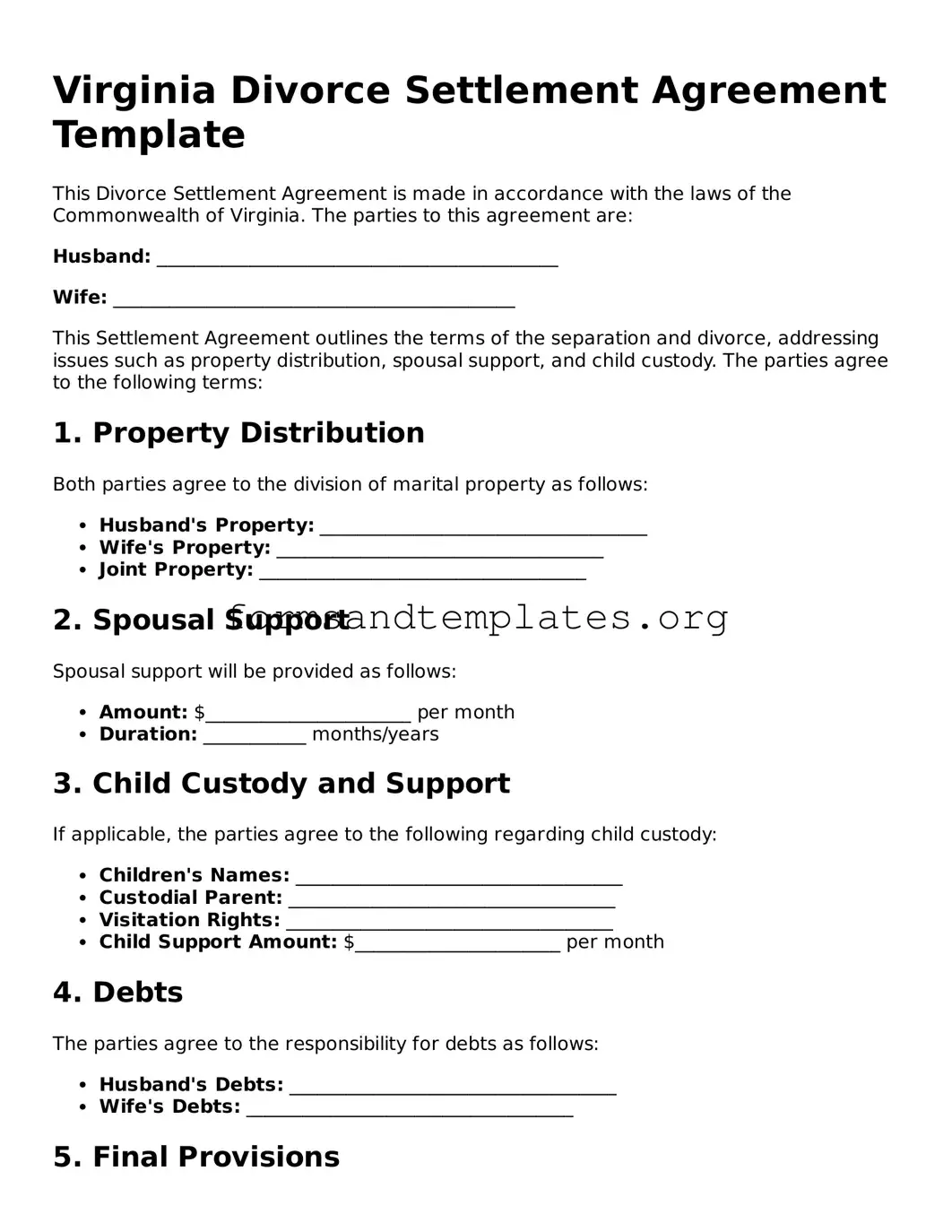Virginia Divorce Settlement Agreement Template
This Divorce Settlement Agreement is made in accordance with the laws of the Commonwealth of Virginia. The parties to this agreement are:
Husband: ___________________________________________
Wife: ___________________________________________
This Settlement Agreement outlines the terms of the separation and divorce, addressing issues such as property distribution, spousal support, and child custody. The parties agree to the following terms:
1. Property Distribution
Both parties agree to the division of marital property as follows:
- Husband's Property: ___________________________________
- Wife's Property: ___________________________________
- Joint Property: ___________________________________
2. Spousal Support
Spousal support will be provided as follows:
- Amount: $______________________ per month
- Duration: ___________ months/years
3. Child Custody and Support
If applicable, the parties agree to the following regarding child custody:
- Children's Names: ___________________________________
- Custodial Parent: ___________________________________
- Visitation Rights: ___________________________________
- Child Support Amount: $______________________ per month
4. Debts
The parties agree to the responsibility for debts as follows:
- Husband's Debts: ___________________________________
- Wife's Debts: ___________________________________
5. Final Provisions
This Agreement represents the entire understanding between the parties and supersedes any prior agreements or negotiations. Each party acknowledges that they have had the opportunity to seek independent legal advice.
By signing this Agreement, the parties affirm that they enter into it voluntarily and with full understanding of its terms. This Settlement Agreement shall be presented to the court and is subject to approval.
Signatures:
Husband: __________________________ Date: ________________
Wife: ___________________________ Date: ________________
